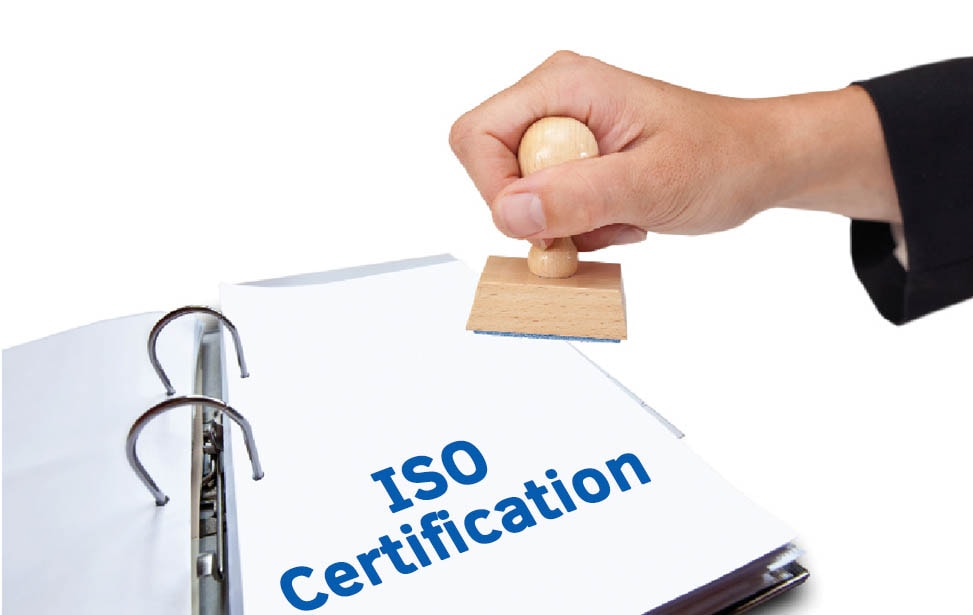The ISO certification of series 9000 was initiated in the year 1987. These standards were accepted globally within a short span of time. In the history of standardization and has initiated a quality movement in the countries known for industries. The policy of the ISO standard are reviewed every five years to check if the art of the current state is reflected. Similarly , the standards which was issued in the year 1987 after the first revision due to the other few revisions which were happening at the same time. The important phase of the revision of the core standards of ISO are explained below

Types of ISO certification
OHSAS 18001 – Occupational Health and Safety Management:
This type of ISO certification can set up the strategies, approaches and control which is required for your company so as to accomplish the most ideal working conditions, adjusted to globally conspicuous prescribed procedures.

ISO 27001 – Information Security Management System:
It distinguishes the hazard associated with the data and fitting controls will be given to lessen the risks.
ISO 22000 – Food Safety Management System
The ISO certification 22000 is a worldwide standard that characterizes the necessities of a food security the board framework which covers all the companies in the evolved way of life from ranch to fork.
SA 8000 – Social Accountability Accreditation Services:
It is an auditable accreditation standard which urges the organization to keep up, create and apply the socially worthy practices in the working environment.
ISO 4217 – International Standard for Currency Codes:
The ISO certification 4217 is utilized to speak to the monetary standards by the universally perceived codes. Monetary forms could be spoken to in the code through two different ways. One is three-digit numeric code and another is three-letter alphabetic code.
ISO 31000 –Risk Management

Dangers which influence the company may have results as far as expert notoriety, financial execution, security and ecological results. Along these lines of ISO certification , dealing with the hazard adequately causes the company to perform well in a vulnerability situation.
HACCP – Hazard Analysis and Critical Control Point
It is a universally perceived framework used to decrease the hazard risks in sustenance. It incorporates synthetic, natural or physical dangers which could be controlled at one point through this procedure. Any element which includes in the assembling, preparing or treatment of sustenance items can utilize the HACCP to take out or limit the nourishment well being risks in their item.
ISO 9001-2015 certification –Quality Management System
ISO 9001 is for quality administration framework. There are tremendous advantages related with ISO 9001. They are listed below:
Get more revenues and business from the new customers:

After you get your ISO 9001 confirmation, can promote the quality affirmation and react to “Demand for Quotes (RFQ)” from the organizations which make the ISO certification, an obligatory one. It likewise opens up another market which you couldn’t do before your affirmation.
Improve the company and the product quality
Quality administration framework ought to be an enhanced dimension of value for the whole association, each item and for each procedure. A very much planned and the successfully executed ISO 9001 QMS put your organization making progress toward quality.
Customer requirements:
The greater part of the organizations search for the momentary result, they disregard the long haul benefits. Those advantages are simply connected with the consumer loyalty; this would make them return over and over. Consistent consumer loyalty is a definitive thing for QMS.

So as to build the ISO quality, and the client’s desire, meet their expressed necessities as well as meet their inferred prerequisites. On the off chance that your QMS is working effectively, you have to know about what your client expects and what you are giving, results an expanded consumer loyalty.
ISO 14001 certification
ISO certification 14001 is the global principles essentially utilized for condition the board, it would not set up any ecological execution necessities rather it gives a structure that an organization can pursue. This really encourages the company to mindful of the exercises which has been the reason for the unsafe impacts and help to consistently enhancing the execution.
ISO 14001 is an intentional standard which coordinates with other administration models, most normally ISO 9001, can be utilized to help with achieving the authoritative objectives.
It deals with the ecological perspective, address the dangers and openings and satisfy the consistence commitments. Inside the Plan do check act (PDCA) approach, structure in the ISO 14001 standard can be utilized for consistent upgrades.
Changes in ISO 9000-1:1994

The quality management and quality control standards mostly provide the guidelines required for selection and use of the first standard as a road map for the ISO 9000 standards of family. This can be explained with the help of the below concepts.
Principal concepts
The following are the basic concepts
Key objectives and responsibilities for quality
This concept has laid the importance of the ISO certification on the improvement of the quality and operations of the product and also ensures that the product quality requirements are achieved. This has created an emphasis on the requirements of the 1987 version for achieving and maintaining product quality.
Stakeholders and their expectations
Stakeholders inclusive of customers, large society, owners, employers and sub suppliers.
Difference among quality system requirement and technical product requirement
The ISO certification 9000 standard subjects are nothing but the quality system that is applicable for the companies but not to the products. These differences are not clear in the version of the 1987 which eventually led to many misconceptions practically.
Generic products
This can categorize the suppliers into four types such as software, hardware, processed services and materials. The ISO requirements of the quality system of all the categories are important but the system management and terminology shall differ.
Facets of quality
The following are the key factors of contribution to the quality of the product. Quality in terms of the definition of the needs, quality in terms of design of the product, quality in terms of the confirmation of the design of the product, quality in terms of product support in its entire life cycle of the product.
Process orientation
It is emphasized by preventing the unsure requirements rather than checking the product for its mentioned requirements. The process in the ISO operations must be widely monitored.
All work is done by a process or procedure or set of procedures
A process shall involve people and resources and can be applied to the products of all the generic product classification of ISO.
The inputs and outputs of the process are the products and information respectively.
Every organization can achieve its work with the help of series of processes. This series or network should be managed to provide consistent result. Quality of the product can be achieved along with a wide network of processes and procedures.
Guidance on the use of quality system standards

Along with the above mentioned ISO certification 9000-1:1994 provides these guidance for the concepts explained
Evaluating quality systems
The ISO 9000 focuses on analysing the measure of the quality of the system, but those standards were not portrayed so before. The three concerned areas of process are
Definition of product and documentation
Deployment and implementation of process
Effectiveness of process
This also clears the duties of audits of quality-system and management review in the evaluation of the quality of the product or process.
Value of documentation
The ISO documentation is important for the following reasons
Accomplishment of the required quality of the product
Evaluation of quality systems
Improvement of quality and
Maintenance of improvements
Quality system situations
Clause 6 explains the following intentions of the ISO certification 9000 standards
Guidelines for management of quality
Contract bonds between first and second parties
Approval and registration from the second party
Approval and registration from the third party
Selection and use of ISO 9000 standards on quality
The ISO 9000 series, clause 7 expands and replaces the information in clauses 6 and 7 of the version released in the year 1987. It is now an obvious source of guidance for selecting the most appropriate standard from the ISO series.
Earnlogic, being one of the leading company registration consultants in Bangalore can help your company in ISO certification.
For more details visit earnlogic.